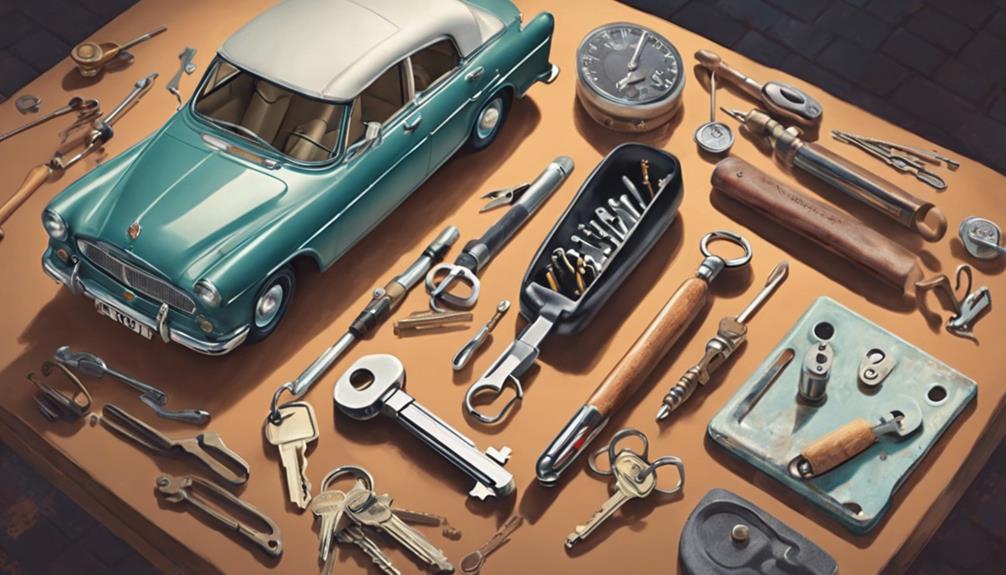Yes, a locksmith can indeed make a replacement key for your vintage car. Skilled locksmiths use traditional metal blanks and old-school key cutting techniques to craft a perfect match for vintage car keys, often made before 1981. They can either duplicate an existing key or create a new one from scratch if necessary. You’ll need to provide proof of ownership through vehicle registration or title, and details like the VIN and Key ID Number help guarantee accuracy. Choosing a locksmith over a dealership is typically more cost-effective and offers faster service. With the right details, you’ll have your key ready and discover further insights into maintaining your vintage car’s charm.
Understanding Vintage Car Keys

Most vintage car keys, crafted before 1981, are traditional metal keys without modern technological features. If you’ve lost yours, don’t panic! You’re not stuck. A skilled locksmith can be your superhero, swooping in to create a replacement key for your vintage car. They work like magicians, using metal blanks to carve out a spitting image of your original key, even if it sports one of those unique key designs.
Thanks to specialized equipment and a knack for accurate duplication, these locksmiths are practically key whisperers. They understand that each vintage car key has its quirks and requires a gentle, precise touch. So, when you’re in need, these key replication experts are the go-to folks to get you back in the driver’s seat, literally!
Essential Details for Key Duplication
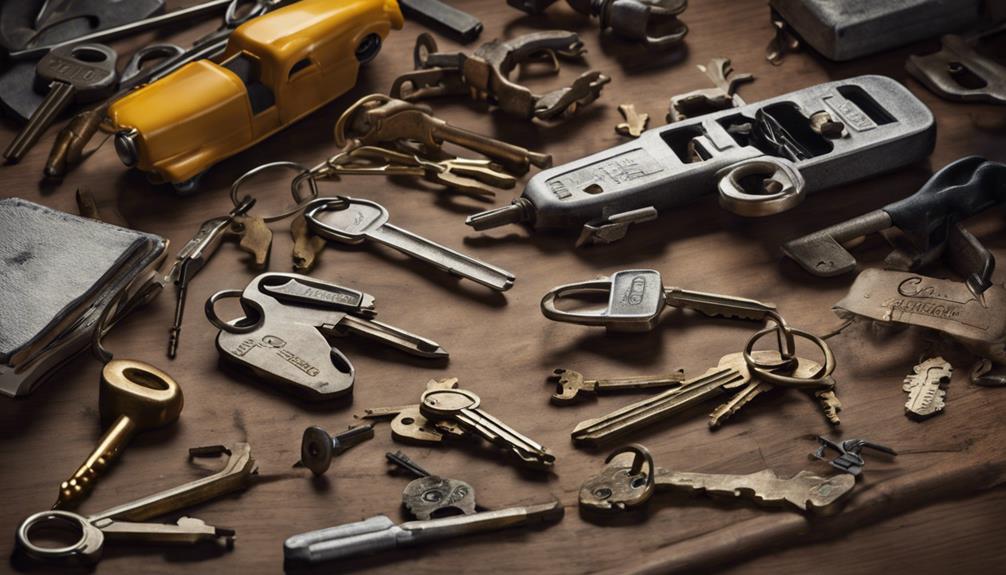
Now that you know locksmiths can replicate vintage car keys, let’s focus on the specific details they need to guarantee a perfect match. To whip up your replacement key, your friendly locksmith will start by cutting from a standard key block—no high-tech wizardry here, just good old traditional keys. They’ll ask for the year, make, and model of your vintage car to make sure the key’s a spitting image of the original. Choosing a locksmith over dealership services isn’t just a quirky choice; it’s cost-effective too! Remember, the right details lead to the perfect key, so let’s keep things rolling smoothly with these essentials. Keep your vintage ride purring with a key that fits just right!
Proving Car Ownership
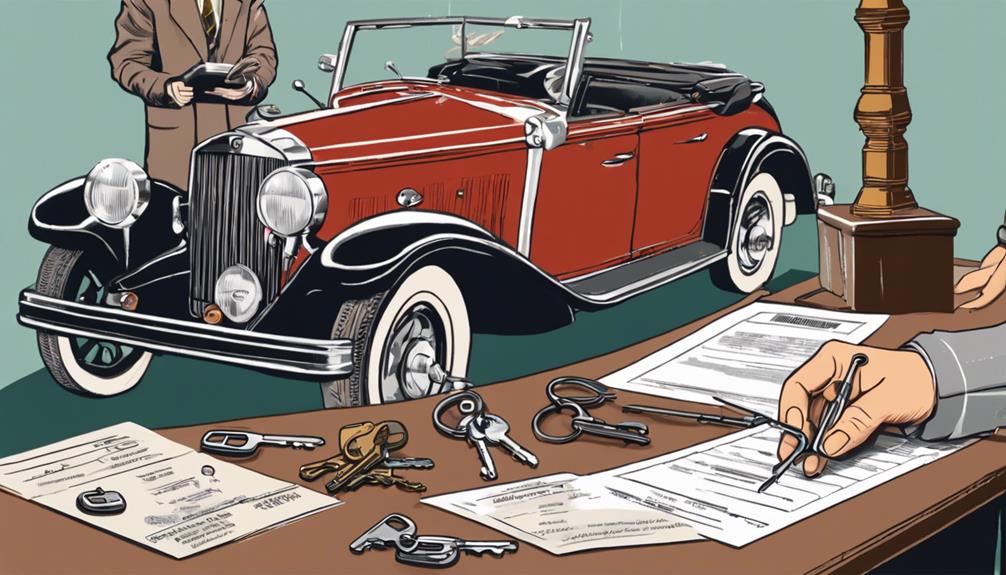
To replace a key for your vintage car, you’ll need to prove ownership by presenting the vehicle’s registration or title. Don’t worry, though, it’s not like you’re trying to access the crown jewels! Just think of it as your car’s special handshake. Here, let’s break it down with a table to keep things crystal clear:
| Document | Purpose | Why It Matters |
|---|---|---|
| Registration | Proves your legal ownership | Required by locksmiths |
| VIN | Identifies the specific car | Helps match key specifics |
| Key ID Number | Key replacement specifics | Expedite process |
With this documentation, locksmiths can verify you’re the legit owner and not just a random person trying to make a fast getaway in a vintage ride. So, keep these essentials handy!
Key Cutting Techniques
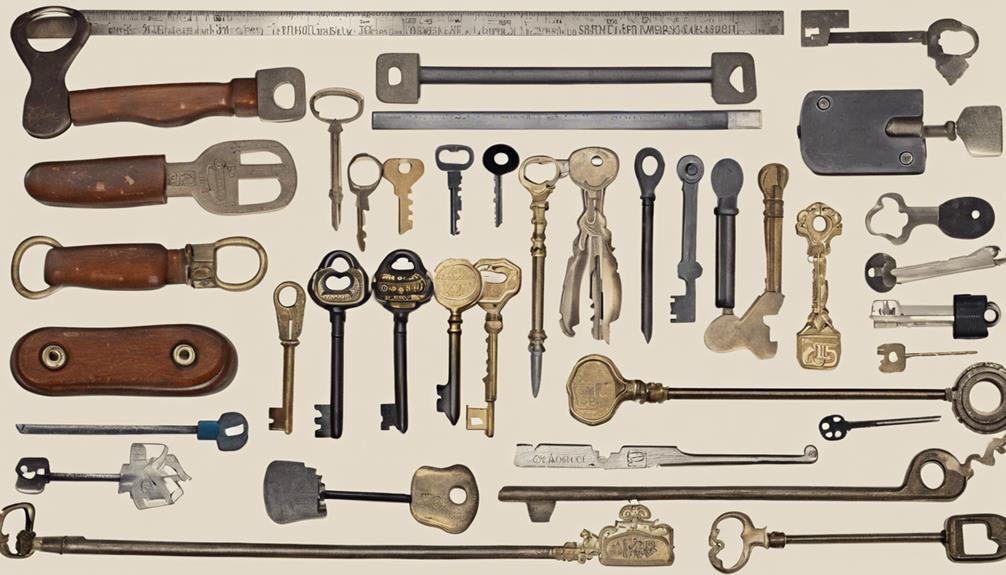
Locksmiths often manually shape keys to match the simpler designs of vintage car locks. When you’re dealing with vintage cars, those old-school key cutting techniques come into play. It’s not just about finding the right key blank; it’s about channeling your inner locksmith artist to manually shape these relics of the past. Specialized locksmiths who work with vintage vehicles really know their stuff, using traditional key cutting methods you probably thought were extinct. They’re like key historians, replicating keys that most would assume belong in a museum. And yes, sometimes they even have to create keys from scratch – talk about a real throwback challenge! So, when your classic ride needs a new key, these pros are your go-to.
Comparing Locksmith and Dealership
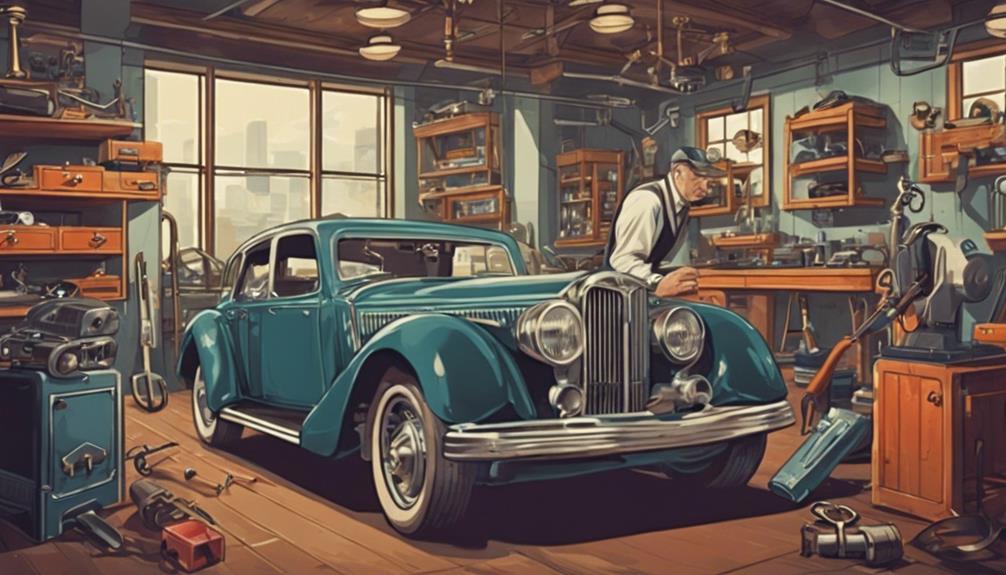
When you’re considering getting a replacement key for your vintage car, you might wonder whether to choose a locksmith or go to a dealership. Locksmiths often offer more cost-effective solutions and can provide faster service by cutting and programming keys on-site. In contrast, dealerships might face delays since they frequently need to order these specialized keys.
Cost Efficiency Analysis
Considering the costs associated with vintage car key replacement, you’ll typically find that locksmiths offer a more affordable solution than dealerships. When you’re dealing with the heartache of a lost key for your classic beauty, the last thing you want is to spend a fortune. Locksmiths, being the savvy saviors they are, provide cost-effective, tailored services at rates that won’t make your wallet cry. Opting for a locksmith not only brings you savings but also guarantees your vintage car receives the specialized service it deserves. Such cost efficiency can be a game-changer for vintage car owners, making it easier to keep your cherished ride in excellent condition without breaking the bank.
Service Speed Comparison
Beyond cost considerations, you’ll also find that locksmiths often deliver faster service than dealerships for vintage car key replacements. While you’re twiddling your thumbs waiting for the dealership to even find the right order form, a locksmith could have already whipped up a replacement key with on-the-spot key cutting. It’s not just fast; it’s efficient, making locksmiths the go-to for those urgent “oops, I did it again” moments with your vintage ride. Their expertise in specialized keys for older vehicles shines through, offering you a cost-effective solution without the long wait. So, next time you’re in a key crisis, remember: calling a locksmith might just save your day—and a lot of your time.
On-Site Locksmith Advantages
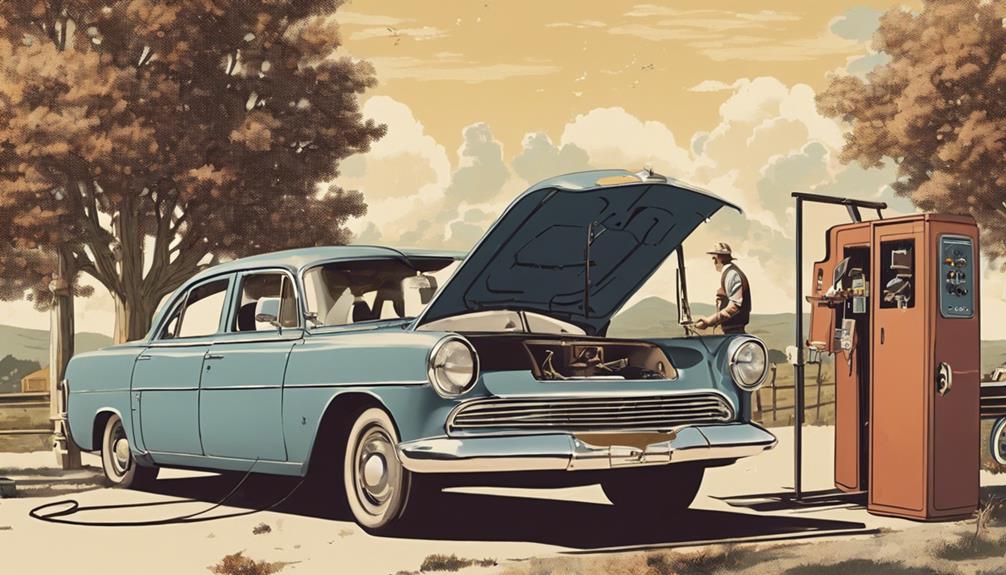
One significant advantage of on-site locksmiths is that they can create replacement keys for your vintage car right where it’s parked, eliminating the need for towing. Imagine not having to haul your precious ride across town just to get a new key! These skilled locksmiths come equipped to cut and program new keys on the spot, which is not just convenient but also cost-effective. You won’t have to worry about the additional hassle and costs associated with towing. Plus, whether your vintage car uses a classic key system or something a bit more intricate, these wizards of the lock-and-key world have the tools and know-how to handle it right at your doorstep. How’s that for service right where you need it?
Cost Considerations
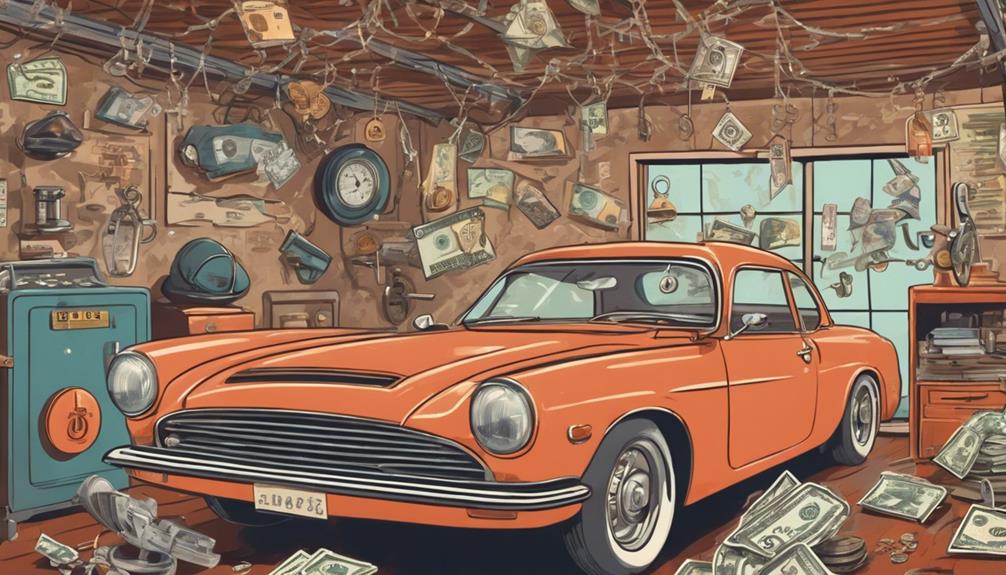
While the cost of a replacement key for your vintage car can range from $10 to $100, several factors influence the final price. If you’re hoping it’s as cheap as yesterday’s lunch special, think again. You’re dealing with a vintage car, not a vintage T-shirt. Traditional keys are your wallet’s best friend, usually on the lower end of the cost spectrum. Toss in a transponder or smart key, and the price jumps—those high-tech gizmos don’t come cheap! Cutting and coding a basic key might not break the bank, but if your vintage ride requires a rare key blank or intricate cutting, the locksmith might just ask for a little extra. Remember, it’s all about the car’s quirky key needs!
Timeline for Key Replacement
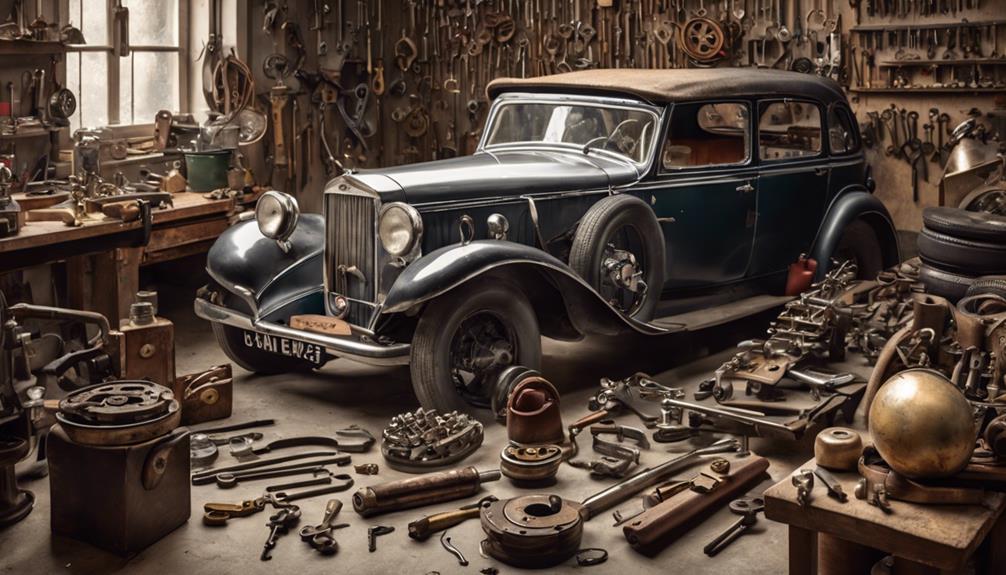
Replacing a key for your vintage car can take anywhere from a few days to several weeks, depending primarily on the availability of the specific key blanks required. Now, don’t panic! You won’t have to begin on a treasure hunt for those elusive key blanks, which are as rare as hen’s teeth for some old-timers. Once the blanks are in hand, the custom cutting and programming party starts, potentially stretching out that timeline. If you’ve buddied up with specialized locksmiths, they can usually whip up a key more efficiently, especially if you’ve got your vehicle information and identification numbers handy. So, keep those details at the ready—it could save you a gray hair or two!
Emergency Services Availability

When you’re stuck with a vintage car and no key, you’ll be relieved to know that emergency locksmith services are available 24/7. These professionals offer rapid response times, ensuring you’re not left waiting. However, it’s important to check ahead for service availability during holidays to avoid any unexpected delays.
24/7 Service Options
Locksmiths provide prompt emergency services for vintage car key replacements, ensuring you’re never stranded due to a lost or broken key. When facing key-related emergencies with your cherished vintage car, skilled locksmiths are your go-to heroes. They aren’t just key cutters; they’re like magicians for your old-school rides! These wizards can access mysterious lock codes and whip up a traditional replacement key faster than you can say “I miss the ’80s!” No programming, no fuss! Whether it’s a quick on-the-spot key replacement or handling different models, these emergency locksmiths are equipped to save your day, ensuring that your vintage pride and joy doesn’t turn into a stationary monument outside your favorite diner.
Rapid Response Times
If you’re stuck with a lost key, rest assured that emergency locksmith services for vintage cars offer rapid response times to minimize your wait. These skilled locksmiths, specializing in unique vehicles, bring their expertise directly to you, ensuring minimal downtime. They’re equipped for on-site cutting and programming, so no need for towing your precious ride to a shop.
| Feature | Benefit |
|---|---|
| On-Site Service | No towing necessary, service at your spot |
| Specialized Expertise | Tailored for vintage cars’ unique needs |
| Rapid Response | Quick turnaround to get you back on road |
| Skilled Locksmiths | Trustworthy hands with your classic gem |
Holiday Availability Concerns
During holidays, you might find that the availability of emergency locksmith services for vintage cars is more limited than usual. With everyone dreaming of sugar plums, even locksmiths take a break! Holiday schedules can stretch response times thinner than your patience waiting for Santa. If you’re planning to cruise in your classic ride, better check with your locksmith ahead of time.
Promoting Low Rate Locksmith
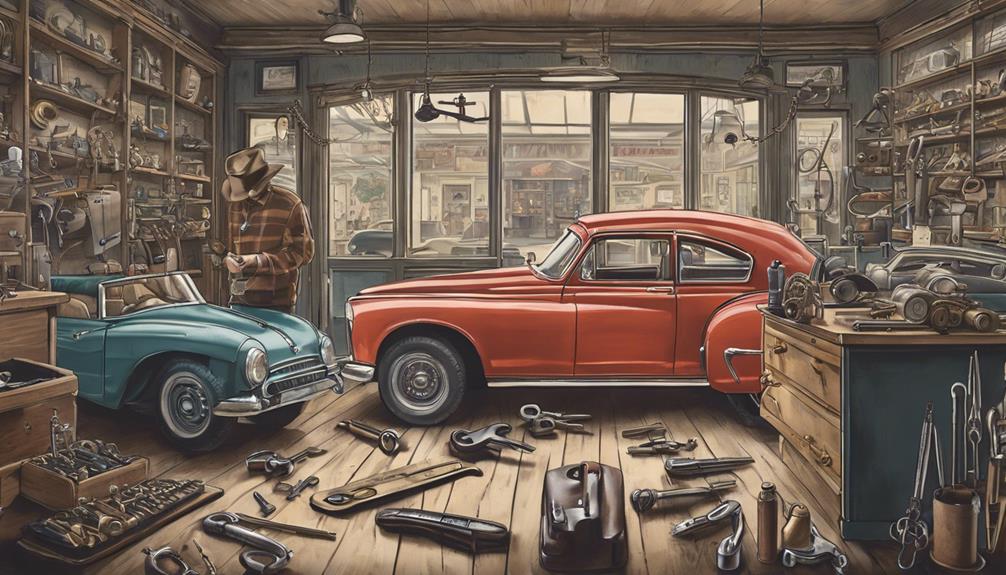
Consider Low Rate Locksmith for dependable and cost-effective key replacement services for your vintage car. They’re not just any locksmith; they specialize in older car models, ensuring your classic ride isn’t left in the dust with outdated keys. With affordable solutions and experienced locksmiths, Low Rate Locksmith stands out as a reliable service provider that vintage car owners trust.
| Feature | Benefit |
|---|---|
| Specialization | Tailored services for vintage cars |
| Affordable | Won’t break the bank |
| Experienced | Skilled in unique, older car models |
| Reliable Services | Dependable, just like your vintage ride |
| Trusted | Loved by vintage car enthusiasts |
Frequently Asked Questions
Can Locksmiths Replicate Keys for Cars With Digital or Transponder Systems?
Exploring the world of car keys, locksmiths are like magicians for your modern ride. Yes, they can replicate keys for cars with digital or transponder systems, but they’ll need more than a wand—they require specialized equipment. If you’ve lost your high-tech key, don’t fret. A skilled locksmith can program a new one, ensuring you’re not locked out from the convenience of your technologically adept vehicle. Just make sure they’re equipped for the task!
Are Vintage Car Keys Different From Modern Keys in Material or Design?
Yes, vintage car keys are indeed different from modern keys in both material and design. Typically, they’re simpler, resembling old-school house keys, made mostly of metal without any electronic components. Modern keys, however, might include transponder chips or even be part of a smart key system, which makes them more complex. So, if you’re ever locked out of your classic beauty, the replication process is usually less of a hassle!
What Security Risks Come With Duplicating Vintage Car Keys?
Verifying vintage car keys can be risky because they lack modern security features. Since they’re easier to replicate without advanced tech, it makes your classic ride more vulnerable to theft. These keys don’t have encryption or electronic components, so making copies is a breeze for those with bad intentions. Always make sure you’re dealing with a reputable locksmith to minimize the risk of unauthorized key duplication. Keep your vintage treasure secure!
How Does Key Duplication Impact a Vintage Car’s Value?
When you duplicate keys for your vintage car, you’re not just making spare keys; you’re investing in its future value. By preserving the original keys and using replicas for daily use, you minimize wear and tear on both the keys and the car’s lock mechanism. This preservation can greatly enhance your car’s authenticity and historical significance, potentially boosting its market value. Always make sure a skilled locksmith familiar with vintage models handles the duplication.
Can Locksmiths Repair Damaged Locks on Vintage Cars?
Yes, you can definitely get a locksmith to repair damaged locks on your vintage car. They’ll delve into the lock mechanism, much like a surgeon in an operation, to fix or replace what’s broken. These pros often have to hunt down rare parts to keep things authentic. So, if your old-timer’s locks are acting up, a skilled locksmith is your go-to fixer, ensuring your classic ride stays secure and original.

